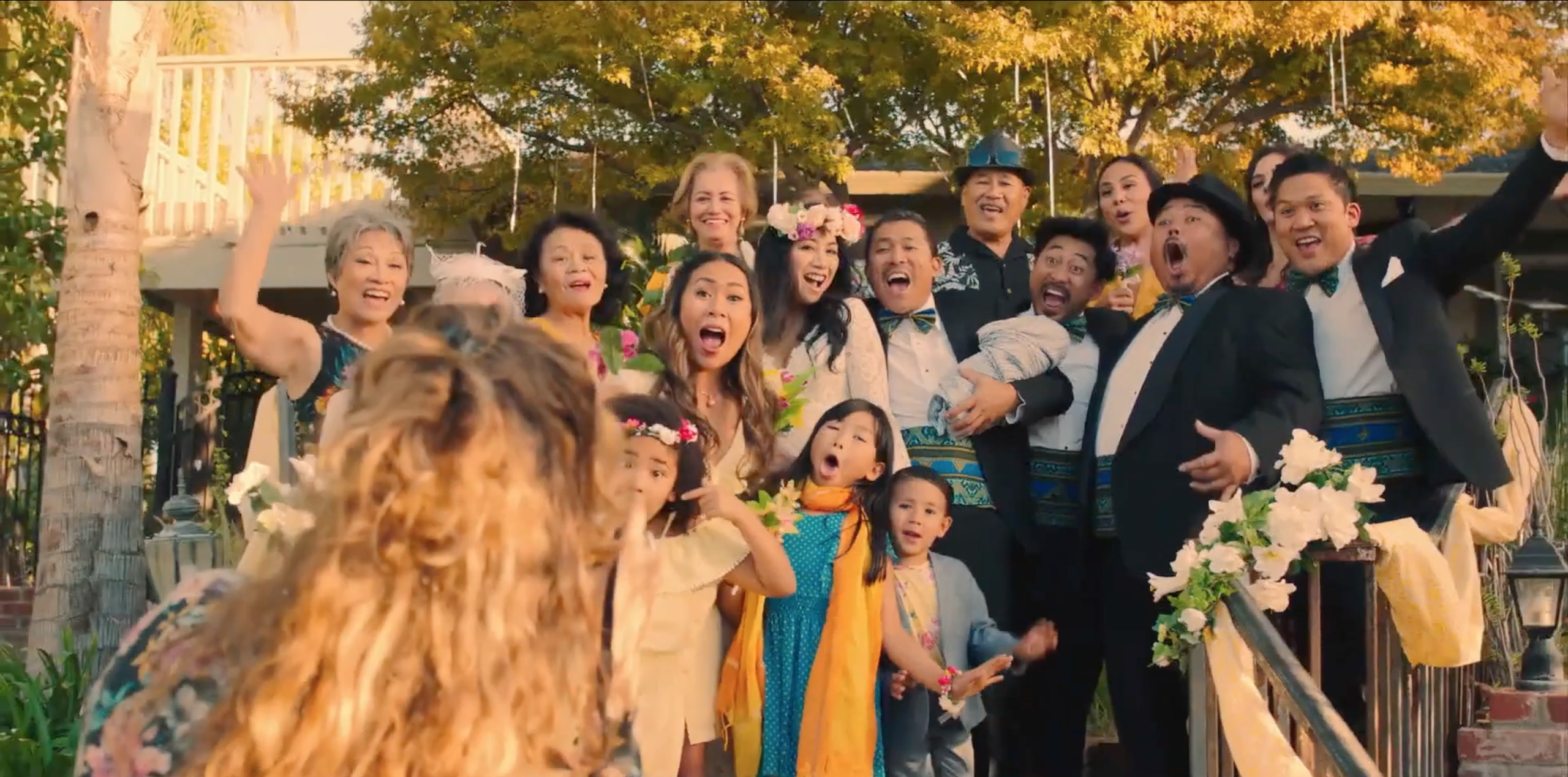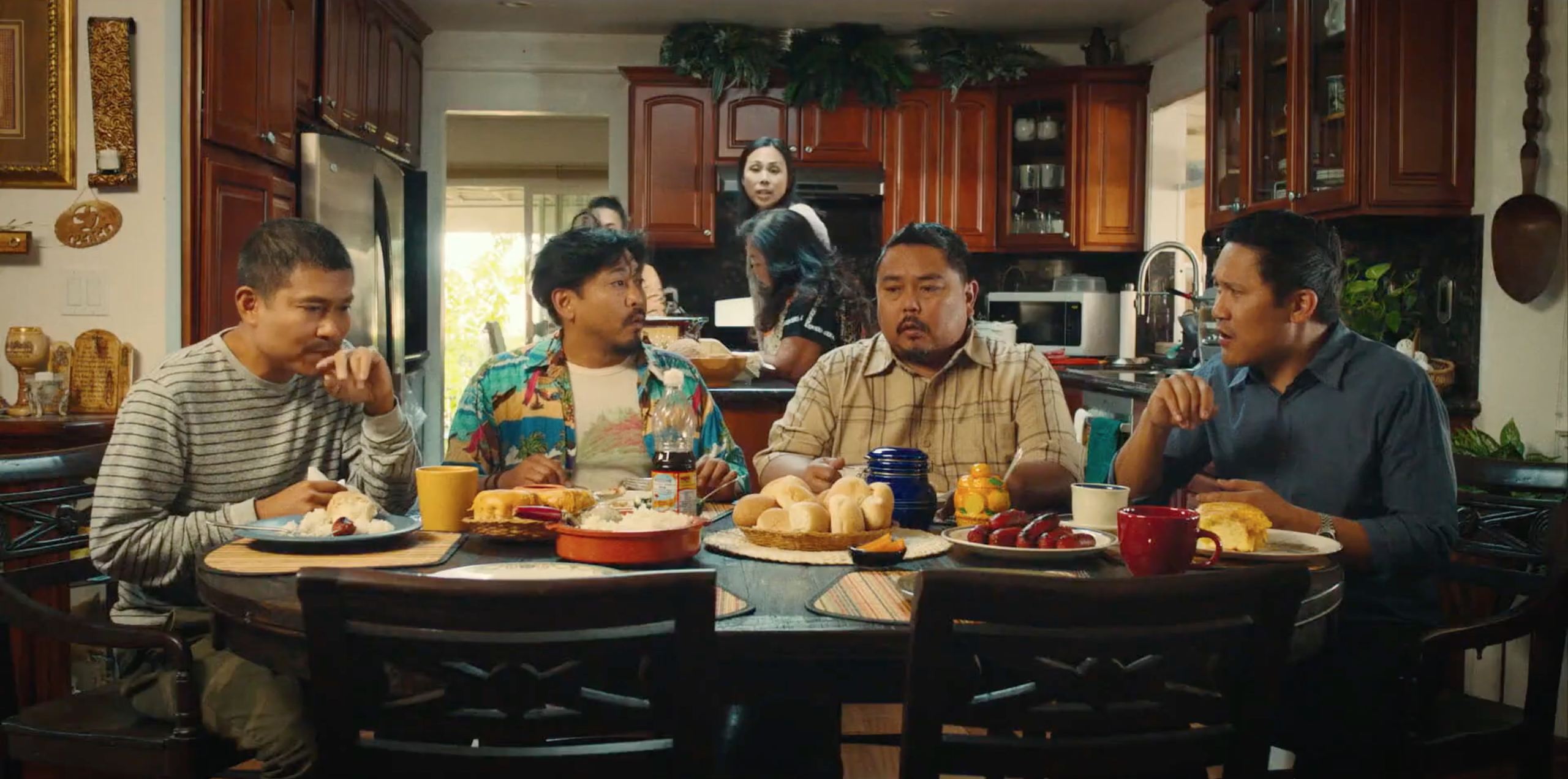By CZERIZHA KAIZEL S. ADZUARA
http://www.youtube.com/watch?v=L0hHFX1pU0U
FILIPINOS are as adaptive as trees. Their branches may conform and spread out in various places, but there is always a strong foundation that holds them down.
A wedding feast takes place in a household somewhere in Pittsburg, California. Instead of a white crowd, the celebrants are draped in vibrant and floral apparel. Every dearly loved cheek is warmed through an intimate beso-beso while Filipino cuisine is served upon tables. There, four Filipino-American brothers made a toast.
Directed by Dante Basco, Fabulous Filipino Brothers unfolds the love stories and misadventures of the four Abasta brothers, whose culture and traditions are merged by two nationalities.
Written by Arianna Basco, Dante Basco, and Darion Basco, the film has four separate segments; each part portrays accounts of every Abasta son, which later on concludes in a wedding event.
In the first part of the film, a wedding arrangement is discussed over breakfast. It introduces the firstborn, Dayo Abasta (Derek Basco), who volunteers to finance the food for the event despite his insufficient budget.

Consequently, this plight caused an argument with his wife, Emily (Cheryl Tsai), as she protests against Dayo’s decisions and his eagerness to carry the extended family’s financial burden upon his shoulders.
The traces of Filipino culture start to pan out. The Abasta household bears beyond the nuclear family set-up. The extended family lives underneath the same roof, which is not common in America. Moreover, Dayo’s Filipino traits as the providing and protective kuya, influence his decisions and actions.
However, the sequence of the segments is not linear and in accordance with the order of the siblings. The second part presents the third and golden child, Duke Abasta (Dante Basco). Duke flies to the Philippines for a business conference, and later on, he encounters his high-school sweetheart, Anna (Solenn Heussaff).
The audience is subjected to the diasporic sentiments of Fil-Am citizens as Duke revisits and gradually cherishes his roots and former lover. He starts to reminisce about the country he left behind. Despite Duke’s memories, the Philippines is still unfamiliar in his eyes. Nonetheless, Duke’s return to his home country becomes a life-changing experience.

Eccentric in personality and the most exuberant with his jokes, Dave Abasta (Dion Basco) appears with a bang. The film’s third part narrates how the fourth son meets his lover. The couple runs across each other before a table of lechon and forms a love connection.
Sadly, this segment does not contribute much to the film’s plot. Its sexual innuendos and the lack of character dialogues provoke the audience to question its significance. Unlike the previous parts, this part fails to provide any story of Dave’s background and life.
The fourth and final segment reveals the second and crestfallen child Danny Boy Abasta (Darion Basco). Danny Boy overcomes the darkness of his last heartache as Theresa (Liza Lapira) glistens his life again. Their love story exhibits an intersection of Filipino and American dating. Despite initially encountering each other on a dating site, Danny Boy and Theresa fall in love on the dance floor. Their hearts intertwined amid their intimate cha-cha, a ballroom dance that is prevalently performed in the Philippines.
Like the patriarchal paradigm in the Abastas’ home country, the Fabulous Filipino Brothers also presents the struggle of an only daughter among many male siblings. Dores Abasta (Arianna Basco) may be the bunso or lastborn in the family, but her youngest hands tend to clean her older brothers’ mess.
In terms of acting, the Basco siblings superbly delivered the dynamic atmosphere of the film. Their performance made the characters’ bond authentic. However, Dante and Darion Basco lack emotional expressions.

As a result, the audience barely empathizes with the characters’ predicament and is only accustomed to the vibrant surface of the film. Nevertheless, the well-written and poetic dialogues expressively embody the film’s romantic and comedic mood.
Regarding its cinematography, the film used various camera focus and angles to convey story emphasis. On the other hand, camera movements were scarcely used as certain scenes are too tedious and consistent. The film’s color-grading used a soft yellowish hue that depicts warmth and joy, which is the epitome of the Abasta’s familial affairs.
Above all, the Fabulous Filipino Brothers successfully and fabulously manifests the traces of Filipino culture in the lives of Filipino-American citizens through a romantic and comedic narrative. Wherever Filipinos branch and intertwine their cultures, their roots will always remain. F



